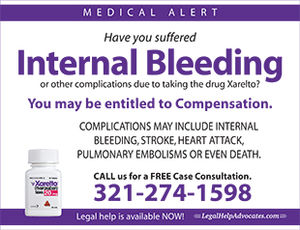Why they keep leaving Jews out of the Holocaust
October 20, 2017
The Canadian government has announced that it will correct a memorial plaque at its new National Holocaust Monument, which spoke of the “millions of men, women and children during the Holocaust”—but neglected to mention Jews.
Unfortunately, Canadian Minister of Heritage Melanie Joly has compounded the original error, by announcing that the new plaque will acknowledge “the six million Jews, as well as the five million other victims, that were murdered during the Holocaust.”
But there is, in fact, no historical basis for that “five million” figure. Still, it keeps cropping up, cited by people who apparently assume it’s true just because a lot of other people keep saying it is.
After critics blasted the Trump administration for neglecting to mention Jews in its January 2017 statement on International Holocaust Remembrance Day, White House spokesperson Hope Hicks said that the administration was trying to be “inclusive of all those who suffered.” She then provided a link to a Huffington Post UK article titled “The Holocaust’s Forgotten Victims: the 5 Million Non-Jewish People Killed by the Nazis.”
A busy White House spokesperson doesn’t have time to start researching Holocaust statistics. Evidently she assumed that a reputable news outlet would not run such an article without basic fact-checking. Also understandable. But she was mistaken.
The author of the article in question was Louise Ridley, an assistant news editor atHuffPost UK who specializes in “media, social affairs and gender,” according to her tag line. In the article, Ridley described some of the groups that were persecuted, in differing degrees, by the Nazis, such as gays, Roma (Gypsies) and the disabled. Her list also included “communists, Jehovah’s Witnesses, trade unionists, and resistance fighters.” She also pointed out that the Nazis murdered several thousand priests, and millions of Polish civilians and Soviet prisoners of war. In fact, the total number of non-Jews killed by the Hitler regime far surpasses five million.
But none of that was part of the Holocaust.
The Germans murdered a lot of innocent people, for a variety of reasons. But the only ones who were targeted for complete annihilation, and whom the Nazis hunted down, in country after country, for the sole purpose of murdering them, were the Jews.


The term “Holocaust” was coined to refer to that specific historical event.
Don’t blame Louise Ridley or Hope Hicks for the confusion.
It was actually Simon Wiesenthal, the famed Nazi-hunter, who was first responsible for spreading the “five million” figure. Confronted many years ago by Holocaust historian Yehuda Bauer, Wiesenthal said that he invented the idea of “five million non-Jewish victims” because he thought it would help get non-Jews more interested in the Holocaust. One can understand Wiesenthal’s concern. But he chose the wrong way to address it.
The President’s Commission on the Holocaust, appointed by Jimmy Carter in 1978 and chaired by Elie Wiesel, specifically warned against “any attempt to dilute” the Jewish nature of the Holocaust “in the name of misguided universalism.”

But the Wiesenthal formulation appealed to White House aides who liked the idea of making the Holocaust more ecumenical, even at the price of historical accuracy. As a result, Carter’s October 1979 executive order establishing the US Holocaust Memorial Council—which then created the US Holocaust Memorial Museum—referred to the Holocaust as “the systematic and State-sponsored extermination of six million Jews and some five million other peoples by the Nazis and their collaborators during World War II.”
Professor Walter Reich, former executive director of the US Holocaust Museum, has written the following:
would not run such an article without basic fact-checking. Also understandable. But she was mistaken.
The author of the article in question was Louise Ridley, an assistant news editor at HuffPost UK who specializes in “media, social affairs and gender,” according to her tag line. In the article, Ridley described some of the groups that were persecuted, in differing degrees, by the Nazis, such as gays, Roma (Gypsies) and the disabled. Her list also included “communists, Jehovah’s Witnesses, trade unionists, and resistance fighters.” She also pointed out that the Nazis murdered several thousand priests, and millions of Polish civilians and Soviet prisoners of war. In fact, the total number of non-Jews killed by the Hitler regime far surpasses five million.
But none of that was part of the Holocaust.
The Germans murdered a lot of innocent people, for a variety of reasons. But the only ones who were targeted for complete annihilation, and whom the Nazis hunted down, in country after country, for the sole purpose of murdering them, were the Jews.
The term “Holocaust” was coined to refer to that specific historical event.
Don’t blame Louise Ridley or Hope Hicks for the confusion.
It was actually Simon Wiesenthal, the famed Nazi-hunter, who was first responsible for spreading the “five million” figure. Confronted many years ago by Holocaust historian Yehuda Bauer, Wiesenthal said that he invented the idea of “five million non-Jewish victims” because he thought it would help get non-Jews more interested in the Holocaust. One can understand Wiesenthal’s concern. But he chose the wrong way to address it.
The President’s Commission on the Holocaust, appointed by Jimmy Carter in 1978 and chaired by Elie Wiesel, specifically warned against “any attempt to dilute” the Jewish nature of the Holocaust “in the name of misguided universalism.”
But the Wiesenthal formulation appealed to White House aides who liked the idea of making the Holocaust more ecumenical, even at the price of historical accuracy. As a result, Carter’s October 1979 executive order establishing the US Holocaust Memorial Council—which then created the US Holocaust Memorial Museum—referred to the Holocaust as “the systematic and State-sponsored extermination of six million Jews and some five million other peoples by the Nazis and their collaborators during World War II.”
Professor Walter Reich, former executive director of the US Holocaust Museum, has written the following:
And so the executive order... officially defined the Holocaust in a way that realized Wiesel’s great fear—that the Holocaust would be defined as an event in which eleven million people, six million Jews and 5 million non-Jews, had been killed, and that the crucial distinction between the planned and systematic extermination of all Jews on racial grounds, and the killing of civilian non-Jews on, say, political grounds—in response to resistance, or because of acts of collective reprisal or brutality—would be lost.
Simon Wiesenthal picked a number of non-Jewish victims that was high enough to seem substantial, but still a little less than the number of Jewish victims. He thought that this formulation would still keep Jews as the primary focus. Evidently he didn’t realize how easy it would be for someone—even an American or Canadian government official—to slide down the slippery slope from “a Holocaust of Jews and non-Jews,” to a Holocaust without Jews at all.
It’s just not that far from a Holocaust of everybody, to a Holocaust of nobody in particular.




Reader Comments(0)